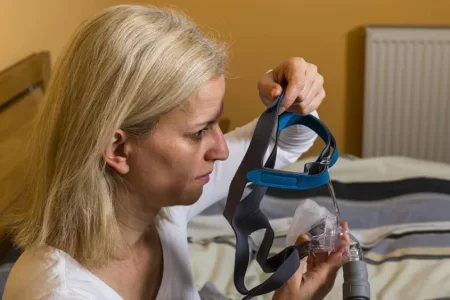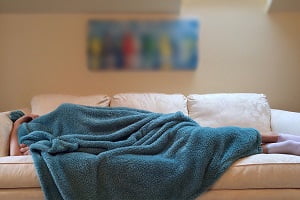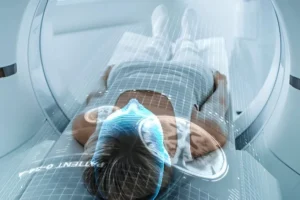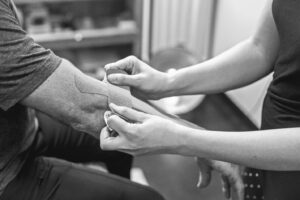Treatment of Sleep Apnea
- Updated on: Jul 12, 2024
- 6 min Read
- Published on Apr 5, 2020
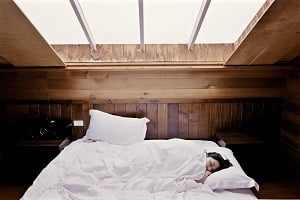
Sleep apnea is a type of sleep disorder which can cause serious health consequences. In this disorder, breathing repeatedly stops and starts. The disease is related to muscles relaxation in your throat. When you stop breathing, your body usually wakes up, causing disruption in your quality of sleep.
Prolonged sleep apnea can increase your risk of developing high blood pressure, metabolic issues, and other health problems. It’s important to treat it early.
How is Sleep Apnea Treated?
If you have mild sleep apnea symptoms, your doctor may recommend only lifestyle changes, such as losing weight, healthy diet maintenance or quitting smoking.
If these measures don’t prove helpful in curing sleep apnea or if your apnea is moderate to severe, there are other treatments available. A sleep clinic in Sydney can help you find the best treatment for your specific needs. The clinic will assess your symptoms and determine which type of treatment is best for you. You may need to try several different methods before finding one that works best for you. The treatment of sleep apnea may include one or more of the following.
Continuous Positive Airway Pressure (CPAP) Therapy
If you have sleep apnea, you might benefit from using a machine that delivers air pressure through a mask while you sleep.
- During CPAP therapy, the air pressure is greater than that of the surrounding air and is just enough to keep the upper airway passage open that prevents apnea and snoring.
- Although CPAP is the reliable method of treating sleep apnea, some people find it cumbersome or uncomfortable. CPAP therapy is most commonly used for treating apnea. Some people find it difficult to use CPAP machine, but with practice, most people learn to adjust the tension of the straps on the mask to make it comfortable and secure fit.
- You may also need to try more than one type of mask to find a comfortable mask. Don’t stop using the CPAP machine if you have problems.
- In addition, you can contact your doctor if you’re still snoring despite treatment.
Upper Airway Stimulation (UAS) Therapy
Most people with sleep apnea are unable to use CPAP therapy, the most commonly prescribed sleep apnea treatment, despite best efforts.
According to American Sleep Apnea Association, there is a new clinically proven therapy for some people with moderate to severe sleep apnea who are unable to use CPAP. This is a type of therapy that works inside your body, and with your natural breathing process, to treat moderate to severe sleep apnea.
This therapy might be good for you if:
- You are having obstructive sleep apnea
- You did not get relief from CPAP therapy
The USAS system consists of three components:
- a small generator,
- a breathing sensor lead, and
- a stimulation lead.
These all are controlled by a small handheld sleep remote. The therapy is turned on at night before bed, and off when you wake up in the morning. During its activation, the therapy continuously checks your breathing patterns during sleep and delivers mild stimulation to airway muscles, which keeps the air passage open. For UAS therapy, your doctor will also evaluate your airway anatomy and overall health status to decide if the therapy is right for you.
Other Airway Pressure Devices
If using CPAP machine is a problem for you, you might be able to use a different type of airway pressure device that can automatically adjust the air pressure while you’re sleeping. Units that can supply bilevel positive airway pressure (BPAP) also are available to maintain pressure. These devices helps in maintaining air pressure when you inhale and less when you exhale.
Oral Appliances
Oral appliances are designed to keep your throat open. Oral devices open your throat by bringing your jaw forward, which can sometimes relieve snoring and mild obstructive sleep apnea.
There are number of oral devices that are available from your dentist. You can try different devices before finding one that works for you.
Once you find the right oral appliance, you’ll need to follow up with your dentist frequently during the course time to ensure that the fit is still good and to reassess your signs and symptoms.
Surgery
Surgery is usually an option if all treatments have failed. Usually, at least a three-month trial of other treatment options is suggested before going through surgery. However, for people with certain jaw structure problems, it’s a single option for sleep apnea treatment.
The surgical options might include:
Tissue Removal
Doctor removes tissue from the rear of your mouth and top of your throat, this procedure is called as uvulopalatopharyngoplasty. Tonsils and adenoids are also removed in this surgery.
This surgery might be successful in stopping throat structures from vibrating and causing snoring. It is considered to be less effective than CPAP and is not a reliable treatment for obstructive sleep apnea.
Removing tissues in the back of the throat with radiofrequency energy (radiofrequency ablation) may be an option if you can’t tolerate CPAP or oral appliances.
Tissue Shrinkage
This process involves shrinkage of the tissue at the rear of your mouth and the back of your throat using energy (radiofrequency ablation). It might be used for mild to moderate sleep apnea. One study has found the effects similar to that of tissue removal, but with less surgical risks.
Jaw Repositioning
During this procedure, your jaw is displaced forward from the remainder of your face bones. This expands the space behind the tongue and soft palate, making less obstruction. This procedure is called maxillomandibular advancement.
Implants
During this procedure, plastic rods are surgically implanted into the soft palate after you’ve received local anesthetic. More research is required to determine how well implants work.
Nerve Stimulation
Nerve stimulation requires surgery to insert a stimulator for the nerve that controls tongue movement (hypoglossal nerve). The increased stimulation helps in keeping the tongue in a position that keeps the airway open.
Tracheostomy
Tracheostomy is a surgical process that creates a surgical air passage in the cervical trachea. Surgeon usually makes an opening in your neck and inserts a metal or plastic tube through which you breathe.
You may require this form of surgery if other treatments have failed and you are suffering from severe, life-threatening sleep apnea.
You can keep the opening covered during the day. But at night you would have to uncover it to allow air to pass in and out of your lungs, bypassing the blocked air passage in your throat.
Surgery for sleep apnea may not be the right choice for everyone. The negative aspects of surgery may include:
- Excessive Pain
- Infection
- Bleeding and throat swelling
- Other breathing problems
- Urine retention
- Sometimes, patients get allergic reaction to anesthesia
In many cases, the surgery benefits may not be permanent. Sleep apnea problem may come back again later for some patients. However, for very few people with certain jaw structure problems, it’s a good first option of treatment.
Undergoing a Weight Management Program
For some cases, weight loss can help in eliminate patient’s sleep apnea symptoms if they are overweight or obese.
Overweight people usually have thick necks with extra tissue in the throat that may block the airway. However, there is no guarantee that losing weight will fully eliminate their sleep apnea, though it may help in reducing the symptoms.
For some obese people, bariatric surgery (weight loss surgery) is recommended.
Positional Therapy
Positional therapy is a behavioral strategy that can be used to treat positional sleep apnea. Some people have sleep apnea only when sleeping on their back (supine position). Their breathing can become normal when they sleep on their side.
This therapy may involve wearing a special device around your waist or back. It allows you sleeping in the side position.
FAQs
How Long Will it Take to Reverse Damage From Sleep Apnea?
Three months of Continuous Positive Airway Pressure (CPAP) Therapy can produce only limited improvements to damaged brain structures and 12 months of CPAP therapy might provide an almost complete reversal of brain damage. Brain damage is accompanied by impairments to cognition, mood and daytime alertness.
Are Bananas Good for Sleep Apnea?
No, bananas are not good for sleep apnea patients. Most fruits are helpful in improving sleep apnea symptoms but bananas are an exception. Banana can increase mucus production, which can make breathing problems worse while you sleep. Softer and over-riped bananas are more likely to contribute sleep apnea problems.
What Does a CPAP Machine Do When you Stop Breathing?
The CPAP machine usually creates enough pressure in your airway to hold the tissue open, so that your airway doesn't collapse. The soft, steady jet of air from the CPAP machine creates pressure to keep the airway open. While using CPAP, sleep apnea symptoms stop.
What Foods are Bad for Sleep Apnea?
Sleep apnea patients should avoid foods that are having high amount of fat and sugar, including red meat, soda, baked goods and processed foods. They should also limit your dairy intake, eliminate fried, junk and fast foods as well as foods that are packaged and manufactured. Eat healthy diet including green vegetables and pulses.





